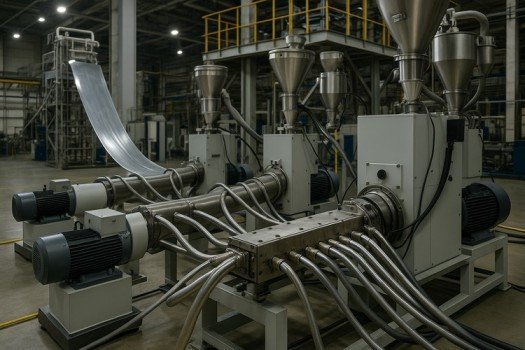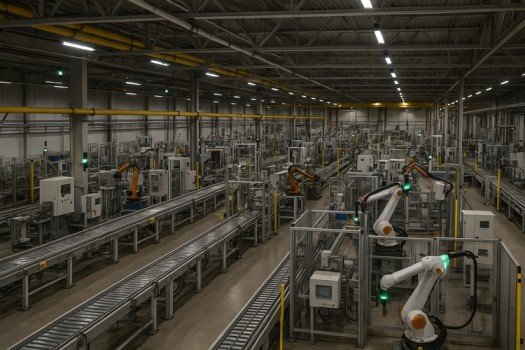The stone paper industry presents a compelling investment landscape characterized by significant growth potential alongside notable barriers to entry. Stone paper investment opportunities are driven by increasing environmental regulations and sustainable packaging demand, while challenges center on high capital requirements and production technology limitations. The global stone paper market, valued between $0.33-1.08 billion in 2024 depending on market scope and methodology, is projected to reach $1.3-1.5 billion by 2033, offering investors substantial returns despite initial hurdles.
Key investment drivers include growing consumer preference for eco-friendly alternatives, regulatory support for sustainable materials, and expanding applications in the packaging and printing sectors. However, potential investors must navigate production costs that are 20-30% higher than traditional paper manufacturing and initial capital investments reaching $150 million for large-scale facilities. Understanding these dynamics is crucial for making informed decisions when investing in stone paper ventures and evaluating opportunities in this emerging sustainable materials sector.
TL;DR Summary
- Stone paper market projected to grow at 3.33-11.7% CAGR through 2033
- Initial capital investment 40% lower than traditional paper plants due to no water treatment requirements
- Production costs remain 20-30% higher than conventional paper manufacturing
- Asia Pacific dominates market with 50.5% global share, led by China and India
- Major opportunities in sustainable packaging, e-commerce growth, and regulatory compliance
- Key challenges include specialized technology requirements and limited consumer awareness
- ROI potential strong but requires strategic market positioning and scale economies
What Makes Stone Paper an Attractive Investment Sector
Stone paper represents a disruptive technology in the traditional paper and packaging industry, offering unique value propositions that attract environmentally conscious investors and forward-thinking manufacturers. The material combines approximately 80% calcium carbonate with 20% non-toxic resins, creating a product that eliminates tree dependency while delivering superior durability, water resistance, and printability compared to conventional paper.
The investment appeal stems from multiple converging market forces. Environmental regulations across major markets are increasingly restrictive toward traditional paper production, with the EU’s deforestation rules and packaging waste mandates creating cost pressures that make stone paper alternatives more competitive. The urgency is underscored by FAO data showing that 10 million hectares of forest are still being deforested annually despite declining rates. Consumer preference shifts toward sustainable products are driving demand across retail, e-commerce, and corporate sectors seeking to meet ESG objectives. The inadequacy of current recycling systems – where only 9% of plastic waste is recycled globally according to OECD data – creates compelling market opportunities for alternative materials like stone paper.
Additionally, stone paper’s unique properties create premium market positioning opportunities. Its tear resistance, water impermeability, and smooth printing surface command higher prices than standard paper products, particularly in specialized applications like outdoor advertising, food packaging, and luxury retail. The technology also offers production advantages through lower water and energy consumption, reduced waste generation, and simplified manufacturing processes that can appeal to cost-conscious industrial investors seeking operational efficiency alongside environmental benefits.
Stone Paper Investment Challenges and Opportunities
The stone paper investment landscape presents a complex matrix of significant barriers alongside compelling growth opportunities that require careful evaluation by potential investors. Understanding both the challenges and opportunities is essential for developing effective investment strategies that can navigate market complexities while capitalizing on emerging trends in sustainable materials and environmental regulations.

Major Investment Challenges
Stone paper manufacturing presents several significant barriers that potential investors must carefully evaluate before committing capital to this emerging industry. These challenges encompass technological complexities, substantial capital requirements, market education needs, and competitive pressures that can impact both entry strategies and long-term profitability in the sustainable materials sector.
Capital Intensity and Technology Barriers
Stone paper manufacturing requires substantial initial capital investments, with production equipment costs estimated at $150 million for facilities capable of producing 120,000 tons annually. While this represents a 40% reduction compared to traditional paper mills due to the elimination of water treatment requirements, the absolute investment remains significant for most investors. Specialized machinery for processing calcium carbonate and resin blending demands technical expertise that may not be readily available in all markets.
The technology challenges extend beyond equipment acquisition. Manufacturing quality stone paper requires precise control of particle size distribution, temperature management during extrusion, and surface coating processes that ensure optimal printability. Production scale limitations currently prevent stone paper from achieving cost parity with conventional paper in many applications. Technical limitations also restrict certain uses – stone paper performs poorly with home printers and degrades under prolonged UV exposure, limiting outdoor applications despite its water resistance advantages.
Market Penetration and Consumer Education
Limited consumer awareness represents a significant barrier to market expansion. Unlike recycled paper or other established eco-friendly alternatives, stone paper requires extensive education about its benefits, applications, and disposal methods. This creates marketing costs and longer sales cycles that can strain cash flow for new market entrants.
Competitive pressure from established alternatives also constrains market growth. Recycled paper products, bamboo-based materials, and conventional paper manufacturers implementing sustainable practices compete directly for environmentally conscious consumers. The cost differential – with stone paper production running 20-30% higher than traditional paper – limits adoption in price-sensitive segments and developing markets where environmental considerations may be secondary to cost concerns.
Key Market Opportunities
Despite significant entry barriers, the stone paper industry offers substantial investment opportunities driven by converging environmental, regulatory, and market forces that are reshaping the global packaging and materials landscape. These opportunities span multiple sectors and geographic regions, creating diverse pathways for investors to participate in the industry’s growth trajectory.
Regulatory Tailwinds and Sustainability Mandates
Government regulations worldwide are creating favorable conditions for stone paper adoption. The EU’s circular economy initiatives, plastic waste reduction mandates, and deforestation prevention rules are increasing costs for traditional paper production while providing regulatory advantages for tree-free alternatives. Government subsidies for green technology further enhance investment attractiveness, with initiatives like the UK’s £60 million funding for sustainable plastic packaging innovation demonstrating public sector support for environmental materials development. Similar trends in North America and the Asia Pacific markets suggest expanding regulatory support for sustainable materials.
Corporate sustainability commitments represent another significant opportunity. Major brands across retail, food service, and e-commerce sectors are implementing ESG targets that prioritize sustainable packaging and materials sourcing. Stone paper’s tree-free production process and recyclability align with these corporate objectives, creating premium pricing opportunities and long-term contract potential for suppliers who can demonstrate consistent quality and supply capacity.
E-commerce and Packaging Growth
The explosive growth of e-commerce creates substantial demand for innovative packaging materials. Global e-commerce trade exceeded $26.7 trillion in 2020, with continued expansion driving the need for sustainable packaging solutions that maintain product integrity during shipping while meeting environmental objectives. This demand is increasingly critical as over 500 million tons of waste are generated through conventional packaging solutions globally, compelling businesses to seek sustainable alternatives. Stone paper’s durability and moisture resistance make it particularly suitable for shipping applications where traditional paper may fail.
Packaging applications currently represent 47.87% the stone paper market revenue, with growth driven by food and beverage, healthcare, and consumer goods sectors. The material’s FDA approval for food contact applications opens opportunities in food packaging where traditional paper requires additional coatings or treatments. Premium retail applications, where packaging serves marketing and brand differentiation functions, command higher margins that can justify stone paper’s cost premium.
Technology Innovation and Cost Reduction
Ongoing innovations in stone paper manufacturing are systematically addressing cost and quality challenges. New production techniques are reducing energy consumption, improving yield rates, and enhancing product consistency. Research and development investments are expected to increase 10% annually through 2033, focusing on enhanced durability, recyclability, and specialized applications.
Manufacturing automation and scale economies are progressively reducing production costs. Companies achieving sufficient scale report production costs approaching those of coated conventional paper, particularly in Asia Pacific markets where raw material costs and manufacturing efficiency are optimized. Breakthrough technologies in calcium carbonate processing and bio-based resin alternatives could further improve cost competitiveness while enhancing environmental benefits.
Financial Analysis and ROI Considerations
Evaluating stone paper investment returns requires a comprehensive analysis of multiple financial variables, including capital requirements, operational costs, market positioning, and regional dynamics that significantly influence profitability potential. Understanding these financial fundamentals helps investors make informed decisions about market entry strategies and expected returns on investment.

Investment Returns and Market Positioning
Stone paper investments offer attractive return potential for investors who can successfully navigate market entry challenges. Premium pricing opportunities exist across multiple application segments, with gross margins often exceeding those available in commodity paper markets. Comprehensive financial analysis of stone paper manufacturing plant investments reveals that while initial capital requirements are substantial, the 40% reduction in infrastructure costs compared to traditional mills creates meaningful advantages. Companies like Europack Bulgaria are targeting production capacities of thousands of tons annually following €30 million investment rounds, indicating strong investor confidence in market potential.
Regional market dynamics significantly influence investment returns. Asia Pacific markets offer lower production costs and established supply chains, but face intense competition from existing manufacturers. European and North American markets provide premium pricing opportunities and regulatory advantages, but require higher initial investments and longer market development timelines.
Risk Management and Market Entry Strategies
Successful stone paper investments require careful risk management around technology, market, and operational factors. Partnership strategies with established manufacturers can reduce technology risks while providing market access and operational expertise. Contract manufacturing arrangements may offer lower-risk entry points for investors seeking exposure without full operational control.
Investment strategies should focus on high-value applications and premium segments where stone paper’s unique properties justify cost premiums. Food packaging, luxury retail, and industrial applications offer better margin opportunities than direct competition with commodity paper products. Understanding stone paper production cost dynamics is essential for evaluating investment viability, as manufacturing expenses remain 20-30% higher than conventional alternatives despite operational advantages. Geographic market selection should balance production cost advantages with market development requirements and regulatory frameworks supporting sustainable materials adoption.
Stone Paper Manufacturing Business Models and Market Entry Strategies
Successful stone paper investment requires careful selection of business models that align with investor capabilities, risk tolerance, and market objectives. Different investment approaches offer varying levels of capital requirements, operational complexity, and potential returns, ranging from direct manufacturing ownership to strategic technology partnerships and value-added processing opportunities.
Production-Focused Investment Models
Direct manufacturing investment represents the highest potential returns but requires substantial capital commitment and operational expertise. Successful production ventures typically require 50,000+ tons annual capacity to achieve meaningful scale economies, translating to $75-150 million initial investments depending on technology choices and regional cost structures. For companies considering stone paper line setup, integrated operations combining raw material sourcing, processing, and distribution provide the best margin optimization opportunities.
Strategic partnerships with calcium carbonate suppliers can reduce input costs and ensure supply chain stability. Limestone quarry proximity becomes a critical location factor, as transportation costs significantly impact raw material economics. Companies like Europack Bulgaria leverage local limestone deposits to create cost advantages while reducing supply chain complexity and environmental impact from transportation.

Technology Licensing and Partnership Models
Technology licensing arrangements offer lower-risk entry strategies for investors lacking manufacturing expertise but seeking market exposure. Established technology providers like Taiwan Longmeng Composite Materials and TBM Co. offer licensing opportunities that include equipment supply, technical training, and ongoing support. License fees typically range from 3-8% of revenue, depending on technology scope and market exclusivity arrangements. Companies like Plentiful Choices, which specialize in production line setup and optimization, can provide valuable consultation for investors evaluating technology partnerships and facility development strategies.
Joint ventures with existing paper manufacturers provide another strategic approach, combining stone paper technology with established distribution networks and customer relationships. These partnerships can accelerate market penetration while sharing investment risks and operational responsibilities.
Value-Added Processing and Application Development
Specialized processing and application development create differentiated investment opportunities with potentially higher margins than commodity production. Converting raw stone paper into specialized products like self-adhesive labels, premium packaging materials, or industrial applications adds value while reducing direct competition with established manufacturers.
Research and development investments in new applications and processing techniques offer patent protection opportunities and first-mover advantages in emerging market segments. Food packaging innovations, construction applications, and textile industry uses represent underdeveloped markets where early investment could establish dominant market positions.
Regional Investment Opportunities and Market Dynamics
Geographic market selection significantly influences stone paper investment success, with each region offering distinct advantages in production costs, regulatory frameworks, market demand, and competitive landscapes. Understanding regional dynamics helps investors identify optimal market entry strategies and capitalize on location-specific opportunities while managing associated risks and operational challenges.
Asia Pacific Market Leadership
Asia Pacific maintains a dominant market position with over 50% global market share, driven by established manufacturing infrastructure, abundant raw materials, and growing consumer demand for sustainable products. China leads global production capacity with numerous manufacturers achieving scale economies that support competitive pricing while maintaining quality standards.
Investment opportunities in the Asia Pacific focus on technology upgrading, capacity expansion, and supply chain optimization rather than greenfield market development. Established players like Shenzhen Stone Paper Enterprise and Guangzhou Myhome Wallpaper Co. demonstrate successful scaling strategies that newer investors can emulate. Regional investment advantages include lower labor costs, established supplier networks, and government support for environmental technology development.
Indian market opportunities center on domestic demand growth and export potential to the Middle East and African markets. Government initiatives supporting sustainable manufacturing and waste reduction create favorable regulatory environments for stone paper investment, while growing middle-class consumer spending drives packaging and stationery demand.
European Market Premium Opportunities
European markets offer premium pricing opportunities driven by stringent environmental regulations and consumer willingness to pay for sustainable alternatives. The EU’s circular economy framework and packaging waste reduction targets create competitive advantages for stone paper over traditional alternatives, supporting higher margins that can justify elevated production costs.
Europack Bulgaria’s planned €30 million production facility demonstrates European market confidence and investment potential. Local production advantages include reduced transportation costs from Asian suppliers, faster customer response times, and alignment with EU local sourcing preferences. Limestone availability across multiple European regions supports raw material security and cost optimization.
Nordic markets show particular promise for stone paper investment, driven by advanced environmental consciousness, strong regulatory frameworks supporting sustainable materials, and premium pricing acceptance among consumers and businesses. Corporate sustainability mandates create a stable demand for certified sustainable packaging materials.
North American Growth Potential
North American markets balance premium pricing opportunities with competitive market dynamics and evolving regulatory frameworks. State-level plastic reduction initiatives and corporate sustainability commitments drive demand growth, while established paper industry players provide competitive challenges and potential partnership opportunities.
Investment strategies should focus on specialized applications and premium segments where stone paper’s unique properties justify cost premiums. Food packaging, luxury retail, and industrial applications offer better margin opportunities than direct competition with commodity paper products. Regional limestone availability supports domestic production development, while transportation costs from Asian suppliers create natural protection for local manufacturers.
Canadian markets demonstrate strong environmental consciousness and government support for sustainable technology development, creating favorable conditions for stone paper investment. Trade relationships with Asian manufacturers provide technology transfer opportunities while domestic resource availability supports independent production development.
| Initial Capital Requirements | High | Medium | $75-150M for meaningful scale |
| Production Technology | High | Medium | Specialized equipment and expertise needed |
| Market Acceptance | Medium | High | Growing environmental consciousness |
| Regulatory Environment | Low | High | Favorable sustainability policies |
| Raw Material Access | Low | High | Abundant limestone availability |
| Competition Intensity | Medium | Medium | Established alternatives but growing market |
| Profit Margins | Medium | High | Premium pricing in specialized applications |
| Geographic Expansion | Medium | High | Multiple regional opportunities |
| Technology Development | Medium | High | Innovation reducing costs and improving quality |
| Supply Chain Complexity | Low | High | Simpler than traditional paper manufacturing |
Conclusion
Stone paper investment opportunities present a compelling proposition for investors seeking exposure to sustainable materials markets while navigating significant entry challenges. The industry’s projected growth trajectory, supported by favorable regulatory trends and increasing environmental consciousness, creates substantial upside potential for well-positioned investors. However, success requires careful attention to capital requirements, technology selection, and market positioning strategies.
The most attractive investment opportunities likely exist in specialized applications and regional markets where stone paper’s unique properties command premium pricing. Investors should prioritize partnerships with established technology providers, strategic geographic positioning near raw material sources, and focus on high-value applications rather than commodity paper replacement strategies. While challenges around capital intensity and market education remain significant, the long-term outlook for stone paper investment appears positive as global trends toward sustainability and circular economy principles continue strengthening.









